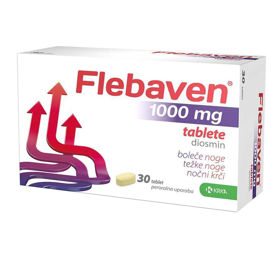Customer question:
What does venous thrombosis of the leg look like? What are the symptoms? Anonymous Customer
Pharmacist's answer
Deep vein thrombosis (DVT) occurs when a blood clot (thrombus) forms in one of the deep veins. Although deep vein thrombosis can occur in any deep vein, it most commonly occurs in the pelvic, saphenous, or thigh veins.
A fractured hip or leg and significant hip, knee, or lower leg surgery can impede normal blood flow and blood clotting.
Images of venous leg thrombosis

Three main factors in the development of venous thrombosis – slow blood flow, hypercoagulation, and vein damage – influence the development of blood clots in leg veins in these orthopedic circumstances.
Common symptoms of GVT include:
- swelling of the foot, ankle, or leg, usually on one side
- cramping pain in the affected leg, usually starting in the sword
- severe, unexplained pain in the foot and ankle
- an area of the skin that feels warmer than the surrounding skin
- the skin in the affected area becomes pale, reddish, or bluish
Deep vein thrombosis is a severe medical condition. Tell your doctor right away if you think you have symptoms of GVT. Treatment focuses on preventing the clot from growing. In addition, treatment can help prevent pulmonary embolisms and reduce the risk of new clots.
The drug provides excellent support and help to the vessels: Detralex.
Interesting reading: Thrombosis signs
Interesting reading: Thrombosis legs symptoms FORUM











